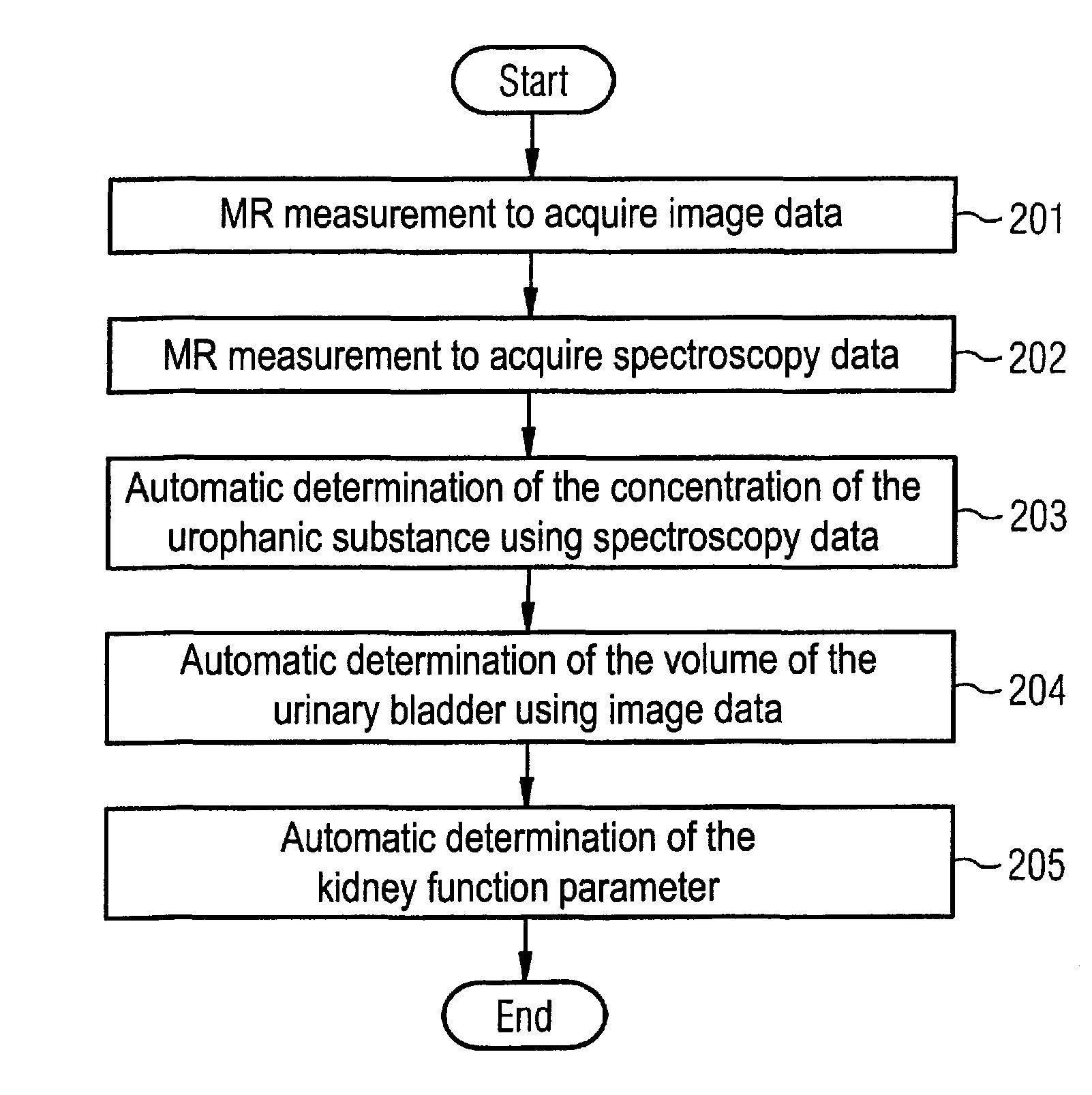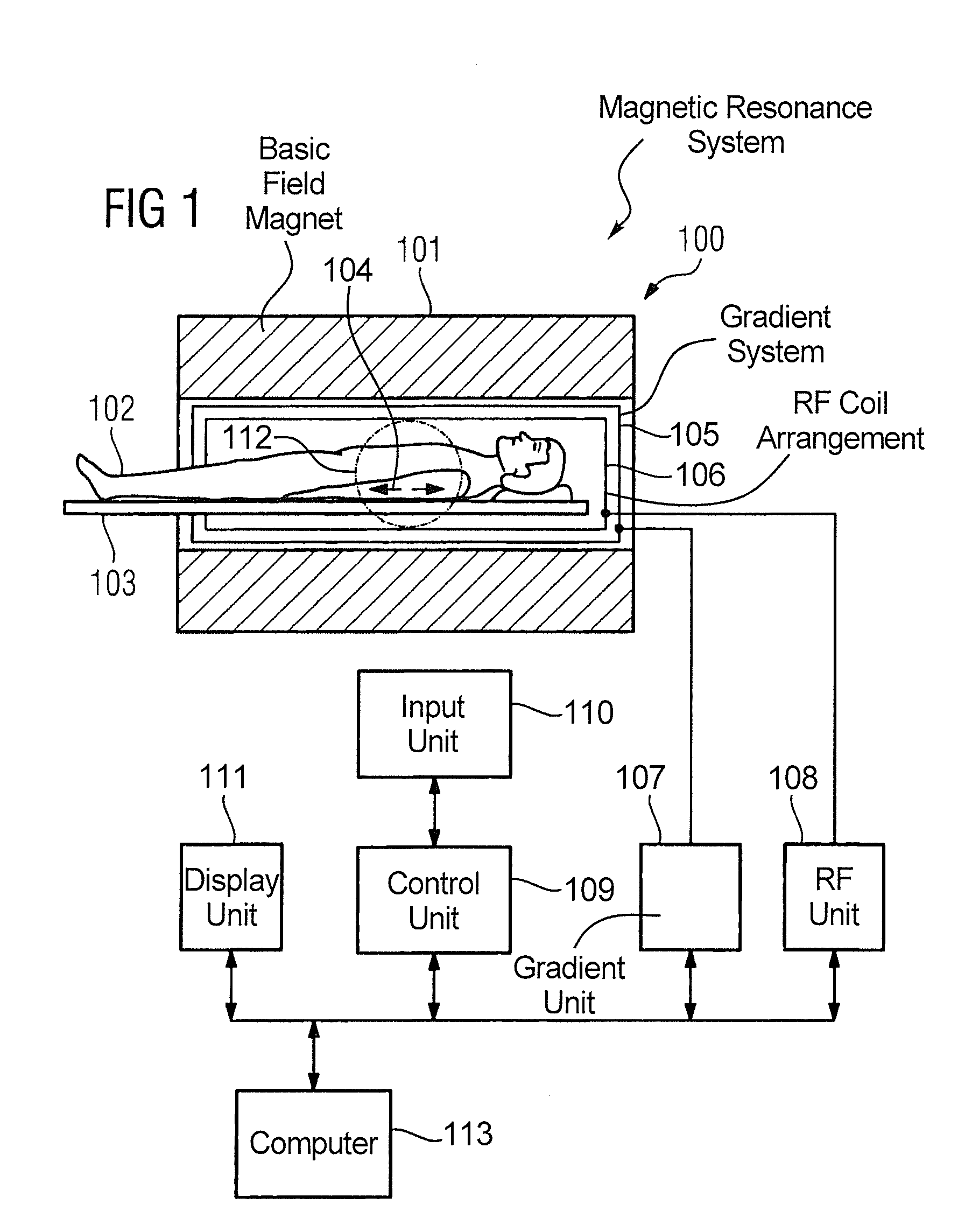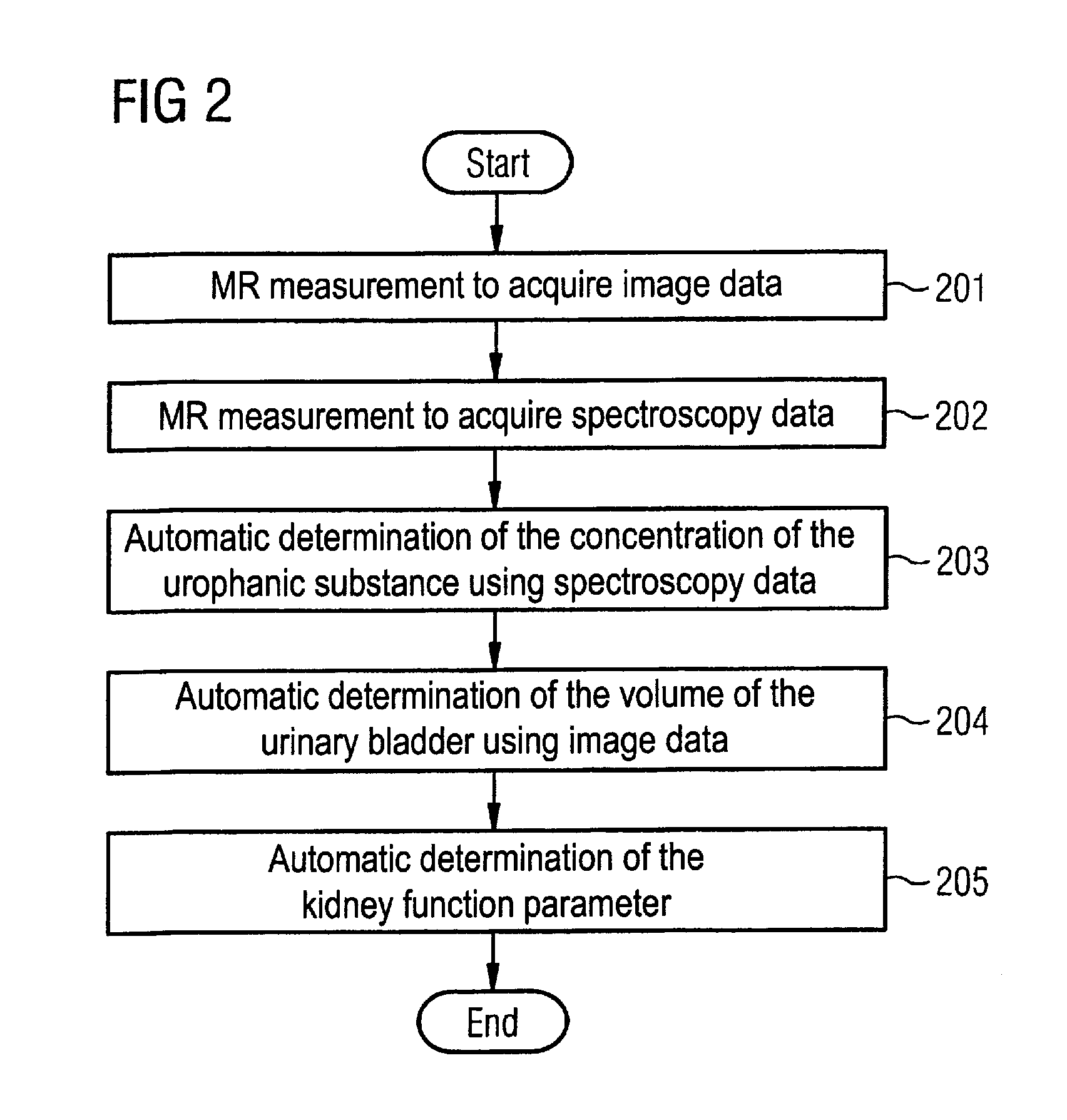Magnetic resonance method and apparatus for determining a kidney function parameter
a magnetic resonance and function parameter technology, applied in the field of magnetic resonance method and apparatus for determining kidney function parameters, can solve the problems of inability to accurately determine the filtration rate, the inability to administer such a contrast agent, and the disadvantages of such a creatinine measuremen
- Summary
- Abstract
- Description
- Claims
- Application Information
AI Technical Summary
Benefits of technology
Problems solved by technology
Method used
Image
Examples
Embodiment Construction
[0033]In the following, the invention is described in detail using embodiments in which both spectroscopic data and image data are acquired to determine the kidney function parameter. However, it should be clear that the described embodiments can likewise be realized without the acquisition of spectroscopic data, for example, the concentration of the urophanic substance being determined using acquired image data. The explanations provided in the following thus can also be applied to other embodiments in which an acquisition of spectroscopic data does not ensue.
[0034]FIG. 1 schematically shows an embodiment of a magnetic resonance (MR) system according to the invention. The magnetic resonance system is designed for a simple determination of a kidney function parameter via implementation and evaluation of magnetic resonance measurements. Such an MR system has a basic field magnet 101 that generates a polarization field B0. An examination person 102 on a bed 103 is slid into the magnet...
PUM
 Login to View More
Login to View More Abstract
Description
Claims
Application Information
 Login to View More
Login to View More - R&D
- Intellectual Property
- Life Sciences
- Materials
- Tech Scout
- Unparalleled Data Quality
- Higher Quality Content
- 60% Fewer Hallucinations
Browse by: Latest US Patents, China's latest patents, Technical Efficacy Thesaurus, Application Domain, Technology Topic, Popular Technical Reports.
© 2025 PatSnap. All rights reserved.Legal|Privacy policy|Modern Slavery Act Transparency Statement|Sitemap|About US| Contact US: help@patsnap.com



